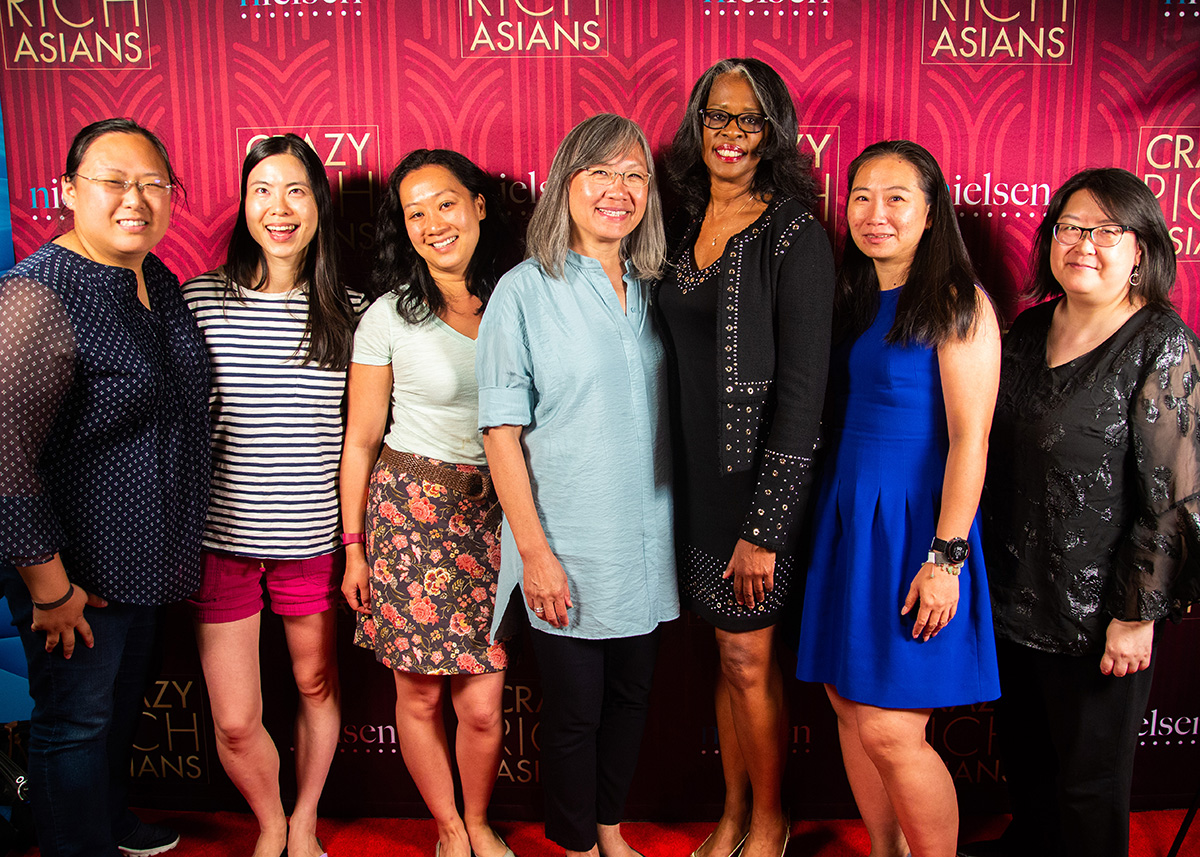
On the eve of Crazy Rich Asians’ nationwide U.S. release last week, we partnered up with Warner Bros. Pictures and IW Group to host a private screening in New York that brought together media professionals and Asian American leaders. The event celebrated a historic milestone for diversity and representation and sparked dialogue about the future of Hollywood in an increasingly multicultural consumer landscape.

As the first major American film starring an all-Asian cast since The Joy Luck Club in 1993, Crazy Rich Asians is more than just a movie for the Asian American community—it’s a cinematic turning point. The Jon M. Chu-directed romantic comedy represents a newfound visibility on the silver screen that has been a long time coming.
“Asian Americans are seeing and recognizing each other, gathering and unifying to be seen and heard like never before,” said Mariko Carpenter, Nielsen’s VP of Strategic Community Alliances. “As a consumer segment with the fastest growing buying power and a strong digital presence, this segment represents tremendous opportunity and influential voice.”
The Nielsen event, held at the AMC 34th Street Theater, attracted representatives from companies like the New York Times, Forbes and Buzzfeed, as well as nonprofit organizations including the Chinese-American Planning Council, the Charles B. Wang Community Health Center and the Korean American Family Services Center.

Nielsen Chief Diversity Officer Angela Talton kicked off the evening by welcoming attendees and highlighting some key findings featured in our newly-published consumer report, Asian Americans: Digital Lives and Growing Influence. The report offers key insights into Asian American consumer habits across various industries. In addition to showing that Asian Americans are the fastest-growing and most affluent U.S. segment—with a buying power quickly approaching $1 trillion dollars—the report also noted that Asian Americans are avid and devoted moviegoers. For example, when compared to Non-Hispanic Whites, Asian Americans over index by 75% for buying movie tickets online and 23% for having attended a movie at a theater once in the last 30 days.
“When it comes to moviegoing rates, Asian Americans over index by every possible measure,” said Angela. “At a time when people are going to the cinema in fewer numbers, studios cannot afford to ignore the Asian American audience.”
Following the screening, viewers were treated to a private reception where they enjoyed dim sum and specialty “mocktails” catered by popular Chinatown eatery Nom Wah Tea Parlor. Conversations turned to why it took Hollywood a quarter of a century to produce another contemporary film with an Asian leading cast and the movie’s opening weekend prospects.
“To say that a film like Crazy Rich Asians doesn’t come around very often would be a gross understatement,” said Nita Song, President & Chief Momentum Officer of IW Group, a multicultural marketing agency that oversaw the Asian American outreach efforts for the Warner Bros. film. “It also presents the ultimate litmus test in terms of proving that Asian Americans are a commercially viable audience segment.”
The movie has inspired similar conversations across news outlets. Caroline Ceniza-Levine, an entrepreneur and blogger for Forbes who attended the screening, documented her reaction in a recent article on Forbes.com—finding key career lessons in both the movie and the consumer insights presented beforehand. In addition, Mariko recently sat down with Bloomberg TV’s Daybreak Asia to discuss the opportunity in the current media landscape for more authentic Asian American content in the wake of the movie’s success.
Pictured above: Angela Talton (third from right) with attendees of the Nielsen screening of Crazy Rich Asians.
